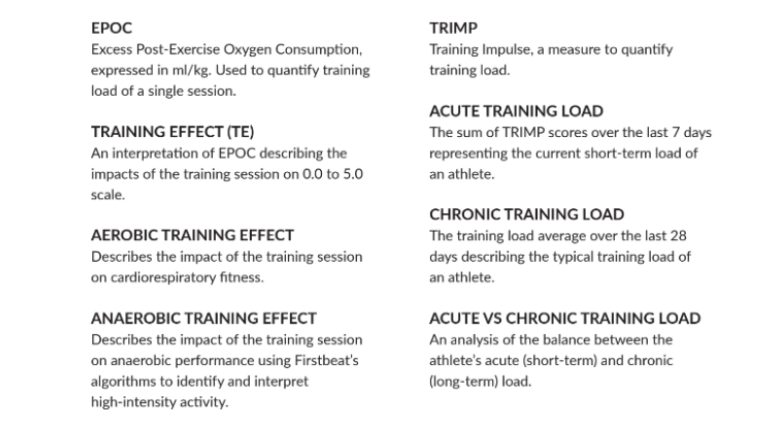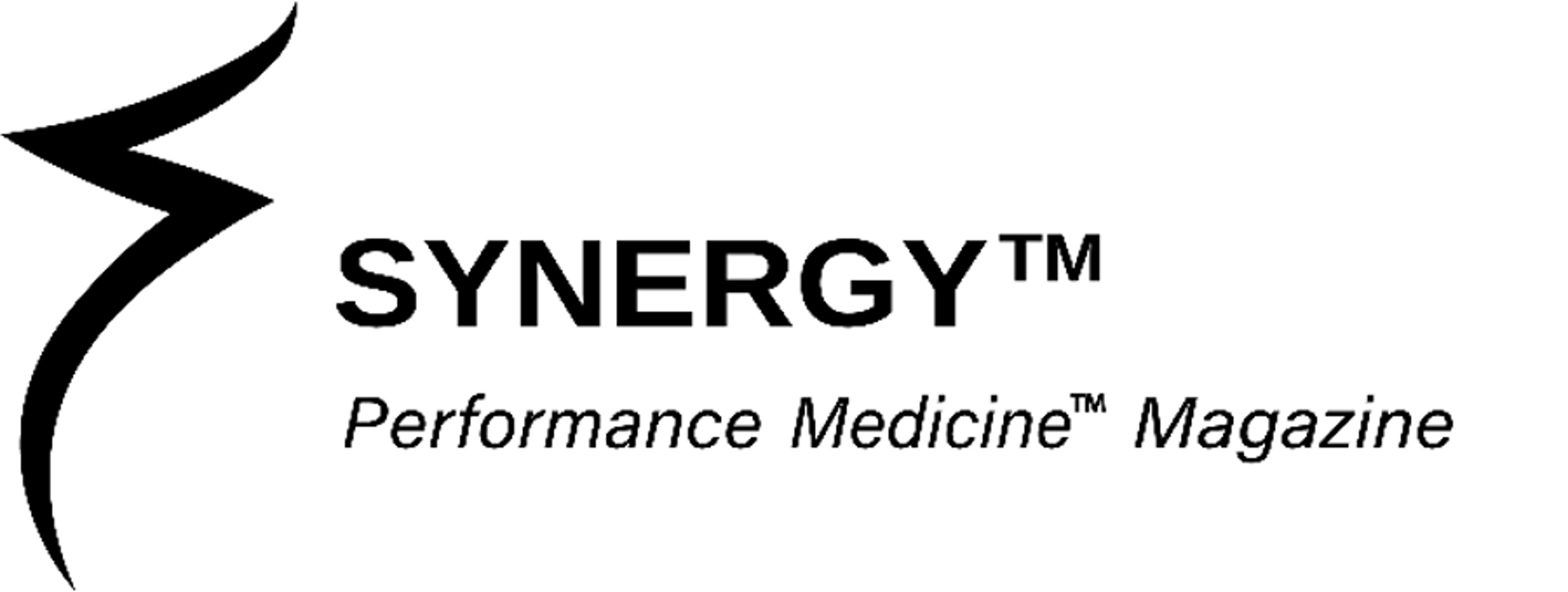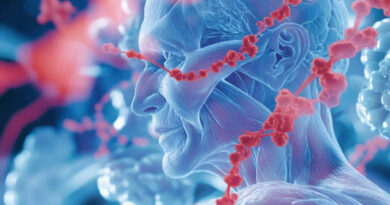Fit But Unhealthy

The beauty of endurance sports is that it teaches us awareness. This awareness delineates effort from struggle and reality from perception – even though perception drives reality.
Being fit but unhealthy is a recurring theme on the trails and in life – whether you are a weekend enthusiast or a podium finisher.
Habits determine lifestyle. One of its most insidious aspects is its ability to dull your awareness and discipline. Optimal health, performance, and longevity mandate an integrative approach.
Mindfulness manifests synergism and cultivates self-actualization. The key to unlocking your health, performance, and longevity mansion doors is when lifestyle and chronotype are in sync. Homeostasis is the desired outcome – with synergism being the lynchpin.
Mastering resilience requires a delicate, in-depth understanding of the human system. Thanks to an array of physiological and psychological stressors, life and endurance sports are unpredictable.
Yet, the subtle art of resilience flits through our subconscious, igniting our bold, conscious, relentless commitment to excellence. Mindset is the key.
We have the technology to eliminate the guesswork, decode superhuman, and propel your limitless potential.
The following modalities represent an unprecedented, bold medical paradigm leveraging cutting-edge technology to balance your autonomic nervous system, shift genetic expression, and propel mind-blowing results in life and sport.
→ Biometric Blood Analysis;
→ Biological Age Assessments;
→ Genomic Sequencing;
→ Heart Rate Variability Testing
Autonomic Nervous System
Our mindset affects our homeostasis. One of the most impactful elements of the preceding approaches is whether or not your autonomic nervous system [ANS] is balanced.
The state of the ANS determines whether the body is in survival or regeneration mode. There are two branches of the ANS: the sympathetic nervous system [SNS – “fight/flight”] and the parasympathetic nervous system [PNS – “rest/digest”].
Prolonged SNS visits insidiously compromise normal bodily functions and negatively impact our health, performance, and longevity.
Research has indicated people reside most in the SNS zone – exacerbated by global pandemics, life-threatening circumstances, and stress. Endurance sports represent a form of stress. Find some compromised areas below:
→ Suppressed digestion – especially gluten and other common allergens;
→ Decreased tissue hydration;
→ Compromised immune system;
→ Reduced lung capacity;
→ Poor circulation;
→ Diminished blood flow | stroke volume;
→ Impaired cognition;
→ Body structure compressed – leading to joint inflammation;
→ Chronic pain
PNS allows the body to function optimally in the spirit of repair and regeneration. A healthy nervous system is an optimal balance of parasympathetic and sympathetic nervous system activation.
The benefits of stress reduction via resilience are equally broad. The following represent some areas where a healthy nervous system dramatically improves function:
→ Premature aging;
→ Blood circulation;
→ Tissue hydration;
→ Brain function;
→ Cardiovascular health;
→ Digestion | food allergens;
→ Cognition;
→ Lymphatic system;
→ Pain relief;
→ Posture;
→ Respiration;
→ Immune system;
→ Stress reduction
BIOMETRIC BLOOD ANALYSIS
A biomarker is an indicator of your body’s physiological state.
Analyzing the physiological markers in your blood is a fast and effective way to discover your biometric benchmarks and measure the impact of lifestyle decisions.
Biometric blood analysis goes beyond identifying generic “clinically normal” ranges to unveil your body’s unique, optimal biomarker zones.
The InsideTracker app analyzes blood. Its expert, automated engine drives the platform, which is continually reevaluated and refined by Harvard, Tufts, and MIT scientists, using information from cutting-edge scientific literature and bioinformatics analysis.
Its engine generates various potential nutrition, supplement, fitness, and lifestyle interventions customized to each client. In addition, its algorithms include more than 8,000 nutritional suggestions based on your blood results.
It provides daily, personalized, precise, data-driven recommendations for nutrition, fitness, and lifestyle based on 48 biomarkers, compared to 10 or fewer typically offered in a physician’s office or lab.
This approach augments our nutrition and supplementation protocols in the spirit of epigenetic propensities.
Biometric blood analysis represents an intuitive, streamlined, and educational interface to transcend health, performance, and longevity from the inside out.
Blood biomarkers indicate your body’s current state and the impact of your lifestyle choices.
Find a few benefits below:
→ Vitamin and mineral deficiencies;
→ Updates bodily changes as we age;
→ Track the unique needs of your body;
→ Identifies health risks;
→ Metabolism;
→ Hormone health;
→ Disease diagnosis;
→ Much more
Discover your potential for a longer, healthier life and unparalleled endurance sports performance.
BIOLOGICAL AGE ASSESSMENTS
Aging is a cellular loss of function. Accelerated aging is the number one risk factor for most chronic and degenerative diseases.
Chronological Age is how long you have been alive [calendar years]. Biological Age summarizes your health at the molecular level.
You always want your biological age to be less than your chronological age because your risk of age-related diseases reduces when you age slowly.
When your body ages in the fast lane – a lot more wrinkles happen; for example, you just celebrated your 38th birthday and feel fabulous; your biological age is 44. Your risk for age-related diseases has increased exponentially at 38.
Your biological age predicts health span and lifespan more accurately than any previous molecular biomarker. It correlates to almost any health factor – physical fitness, socioeconomic status, and all inputs from life.
Longevity research tracks molecular markers linked with the aging process. Your chronological age will progress at a fixed rate, but your biological age depicts how your lifestyle choices and behaviors affect your body.
Epigenetic markers provide a snapshot of your health span [current health] and your lifespan [how long you will live].
Research shows DNA methylation [epigenetic markers] is a fundamental process of aging and the most predictive biomarker for all age-related diseases. Studies have shown that decreasing your biological age by seven years cuts in half your incidence of age-related diseases.
Environmental factors and your choices impact gene expression. Through lifestyle modifications to optimize health, endurance training, race performance, and longevity, you can reverse biological age in eight weeks. Your DNA is not your destiny.
Aging is the progressive loss of cell function; we do not age the same way or at the same rate. Epigenetic markers are responsible for cell function. You can make real and lasting improvements to your health and lifespan at a molecular level through lifestyle choices.
Some benefits of a biological age assessment include the following:
→ Analysis of the impact of lifestyle choices on your body ;
→ Age score pinpoints areas to improve health, performance, and longevity;
→ Identifies disease and morbidity risks before their clinical manifestation;
→ Provides insight into health span versus lifespan
EPIGENETIC TESTING
Life begins and ends at the cellular level.
Epigenetics represents the study of organism changes by modifying gene expression without altering the genetic code [DNA blueprint/sequence].
“Epi” is the Greek lexicon for “above.” Epigenetic markers position above your DNA sequence and impact gene expression/suppression based on lifestyle factors [methylation].
Epigenetic testing provides incisive, data-driven, evidence-based measures and strategic actions to optimize health, performance, and longevity.
Your DNA blueprint is absolute. Think of epigenetic markers as apostrophes sprinkled above the words and letters of a sentence [your DNA sequence].
Your DNA provides instructions for proteins produced inside the cells. Epigenetic markers impact [like a dimmer switch] how genes read cells.
Epigenetics represents all inputs from life – and what is possible. It identifies propensities that can be modified based on 1,000,000 variants. Find below some categories beneficial to endurance athletes:
→ Sleep;
→ Stress;
→ Nutrition;
→ Supplementation;
→ Athletic performance;
→ Environmental health;
→ Hormones;
→ Biological age;
→ Neurotransmitters;
→ Endocannabinoid and glutathione systems;
→ Nitric oxide production;
→ Mitochondrial biogenesis;
→ Neuroepigenetics;
→ Heart rate variability;
→ Cognition;
→ Several more categories
Proper gene expression is a big deal. The mayhem begins when gene expression and suppression are not in sync – and its cellular impact reaches far beyond a sub-par outing on the trails.
It invites inflammation, chronic and degenerative diseases, accelerated biological aging, senescence, and numerous other undesirable outcomes – no matter one’s fitness level.
The promise of epigenetic testing is its depiction of cellular integrity. When variants highlight abnormal cellular function, it allows the opportunity to reverse chronic, degenerative, autoimmune states, cancer, and biological age while improving your health, performance, and longevity via modifications to gene expression.
Epigenetic testing can reveal propensities to disease, leading some people to take preventive measures. However, one’s ability to do that depends on one’s predisposition and how to mitigate or prevent it.
The game-changing science of epigenetics creates personalized and precise optimization strategies by taking the reins of gene expression to adapt and thrive under various environmental pressures.
WHOLE GENOME SEQUENCING
Whole Genome Sequencing [WGS] is a technique that provides the complete genetic blueprint of an organism by analyzing its entire DNA – both coding and non-coding regions. It analyzes more than three billion variants.
All organisms have a unique genetic code. It consists of a combination of DNA markers [Adenosine – A, Cytosine – C, Guanine – G, and Thymine – T] known as Single Nucleotide Polymorphisms [SNPs – pronounced “snips”].
WGS is the technology that identifies the unique sequence of the base pairs. Epigenetics explains gene expression through environmental stressors. Epigenetics represents the study of changes in an organism by modifying gene expression without altering the genetic code [DNA blueprint/sequence].
Epigenetics helps WGS depict cellular integrity. Knowledge of DNA sequences is indispensable to precision medicine, improved diagnosis, and prevention.

WGS is the most comprehensive DNA test on the planet. Its impeccable accuracy assists in diagnosing several diseases and conditions that impact health, performance, and longevity within and between species.
WGS is an invaluable tool for understanding the role of genetic variants in sports performance. Mitochondria represent one of the most important organelles within a cell.
Mitochondria represent the “powerhouses of the cell.” The process these organelles implement to convert glucose, amino acids, and fatty acids from macronutrients – carbohydrates, proteins, and fats – into molecules termed ATP [adenosine triphosphate] is mitochondrial biogenesis. ATP is the energy current of the cell.
Mitochondria are crucial to WGS because they possess distinct DNA [mtDNA], which can be sequenced parallel to the genome to enhance the breadth of complex data.
HEART RATE VARIABILITY
Heart Rate Variability [HRV] measures the interval between heartbeats in milliseconds. It provides a detailed snapshot of how your heart adapts to physiological and psychological stressors.
* Heart rate [HR] → Heartbeat frequency such as beats per minute [bpm];
* Heartbeat [HB] → [R-R interval] Milliseconds between consecutive heartbeats [R-waves];
* HRV → Millisecond [ms] variation between heartbeats [R-R intervals]
HRV is linked to physiological and psychological stressors and is the most precise metric for measuring ANS health and imbalances.
Measurements are performed via PPG [photoplethysmography] or ECG [electrocardiogram]. The former uses sensors [Oura Ring], and the latter is a clinical-grade device [Firstbeat Life™].
HRV is the most precise metric to measure your stress response and balance your ANS.
It is a holistic approach to optimizing endurance sports performance and quality of life.
Optimal health is considered synonymous with high HRV levels. The key is modulating your ANS branches versus fixating on your HRV number.
A balanced ANS will increase your HRV – even after exertion. Recovery time and optimal HRV levels are dependent on respiration, heart rate, and arterial blood pressure functioning at the same frequency – cardiac coherence.
The arterial baroreceptor reflex, or baroreflex, is the most important mechanism for moment-to-moment control of arterial blood pressure [ABP].
The baroreflex buffers acute fluctuations of ABP during exertion, emotional trauma, postural position shifts, and other conditions. The primary purpose of the arterial baroreflex is to maintain blood pressure homeostasis.
Prolonged stress insidiously impacts your health, performance, and longevity even if you psychologically embrace it. HRV measures a multitude of stressors related to sports performance and wellness:
→ Health;
→ Sleep;
→ Stress;
→ Nutrition;
→ Training load adaptation;
→ Overtraining | exertion;
→ Recovery:
→ Performance – gender specific;
→ Injury;
→ Strength and power development;
→ Metabolic efficiency | fat oxidation;
→ Anxiety;
→ Depression;
→ Insomnia;
→ Hypertension;
→ Fibromyalgia;
→ Immune system disorders;
→ Headaches;
→ Gastrointestinal issues;
→ And more
HRV has an inverse relationship with HR. The higher the HR [exercise], the lower the HRV. The lower the HR [sleeping], the more elevated the HRV. A higher HRV level is often used as a prime indicator of good health; however, a balanced ANS rules.
HRV naturally decreases during stress when elevated SNS activity attempts to keep pace with the demand. It is typically higher when the heart beats slowly—meditation and sleep—and lower when it beats faster—stress and exercise. Snowshoeing represents stress [exertion].
A balanced ANS will increase your HRV – even after exertion. Recovery time and HRV levels are dependent on breath cycles. Cardiac Coherence is when HR and respiration cycles are in sync.
→ Respiration;
→ Inhalation and exhalation;
→ Arterial blood pressure
Genetics contribute significantly to HRV levels, which can be improved by modifying one’s lifestyle – health, fitness, stress management, recovery skills, and the like.
Time Domain Measurements
→ RR interval: The interbeat interval between all successive heartbeats;
→ NN interval: The interbeat interval from which artifacts have been removed;
→ SDNN: The standard deviation of NN intervals;
→ AVNN: The average NN interval;
→ RMSSD: The root mean square of successive differences between NN intervals;
→ NN50: The number of pairs of adjacent NN intervals recording more than 50ms variation;
→ pNN50: Percentile of NN50 per recording
Clinical-grade sensors record both NN intervals and RR intervals, which are both types of interbeat intervals that can be recorded to monitor HRV:
→RR intervals:
The interval between heartbeats is measured in milliseconds. RR intervals can be used to calculate heart rate, which is the average number of beats per minute.
→NN intervals:
Another name for RR intervals, but the letter “N” is used to indicate the intervals are “normal” and free of artifacts. NN intervals are derived by filtering RR intervals to remove physiological and sensor-related artifacts – retaining only those that don’t deviate more than two standard deviations from the mean.
HRV measures the interval between heartbeats. The standard deviation of all normal NN intervals over a 24-hour period, known as SDNN, is a common time domain measure of HRV. The root means square of successive RR interval differences, or RMSSD, another HRV parameter that measures beat-to-beat variability.
ENDURANCE SPORTS
HRV is important to endurance athletes because it provides a detailed analysis of their training load and recovery status through heart rate data. allowing them to optimize their training and recovery to avert overtraining and potential injuries, ultimately maximizing their performance potential.

The Keys for Endurance Athletes:
→ Accurate Training Load Monitoring:
Firstbeat uses advanced algorithms to calculate a comprehensive training load based on HRV, not just heart rate, giving a more nuanced picture of the stress placed on the body during exercise.
→ Recovery Insights:
By analyzing heart rate data, Firstbeat Sports can assess an athlete’s recovery status, alerting them to signs of fatigue or overtraining, allowing for timely adjustments to their training schedule.
→ Individualized Approach:
Firstbeat provides personalized data for each athlete, taking into account their unique physiological responses to training, allowing for tailored training plans.
→ VO2 Max Calculation:
Firstbeat Sports can estimate an athlete’s VO2 max without the need for lab tests, enabling them to track progress in aerobic capacity over time.
→ Anaerobic Training Assessment:
Firstbeat Sports can also analyze anaerobic training efforts, providing insights into an athlete’s ability to perform high-intensity bursts.
→ Monitor sleep:
Integrating sleep data with training metrics allows for a holistic view of recovery and potential areas for improvement.
→ Identify optimal training zones:
Use the data to determine appropriate training intensities for different workout goals.
→ Adjust training based on recovery status:
Modify training volume or intensity depending on their current recovery level.
→ Prevent overtraining:
Monitor training load and adjust training schedule to avoid excessive fatigue and potential injuries.
→ Track progress:
Analyze trends in training load, recovery, and VO2 max to assess the effectiveness of their
HRV is an invaluable tool for understanding a person’s physiological state and can provide insight into various aspects of health, including stress levels, physical fitness, and sleep quality. Low HRV values can indicate high stress levels or poor physical condition, while high HRV values can indicate a relaxed and well-rested state.
Physiological Metrics Impacting HRV:
→ Inhalation and exhalation, control of breathing;
→ Autonomic Nervous System (ANS) adjustments;
→ Hormonal reactions;
→ Metabolic processes and energy expenditure;
→ Physical activity, exercise, and recovery from physical activity;
→ Movements and changes in posture;
→ Cognitive processes and mental load;
→ Stress reactions, relaxation, and emotional reaction
The foregoing modalities represent the interconnectedness of seemingly disparate elements. Harmony between the ANS branches is crucial to endurance sports, which connects to everything in your life.
The moment you realize you control your destiny – no matter the volatility – is when you understand your health, performance, and longevity in life and sport are limitless.
Growth has no endpoint…
Merge knowledge of your genetic code, blood analysis, biological age, and HRV with curated consults tailored to your desired outcomes.
We have the technology to eliminate guesswork, decode superhuman, and propel limitless potential.
Challenge yourself today to boldly manifest the keys to your mansion of unparalleled health, performance, and longevity from the inside out. The last thing you want is to be fit but unhealthy.
A limitless life is a choice…
Schedule a FREE CONSULTATION via our contact form or 401.207.4215.
Find more information at: https://pmsynergy.com/.



